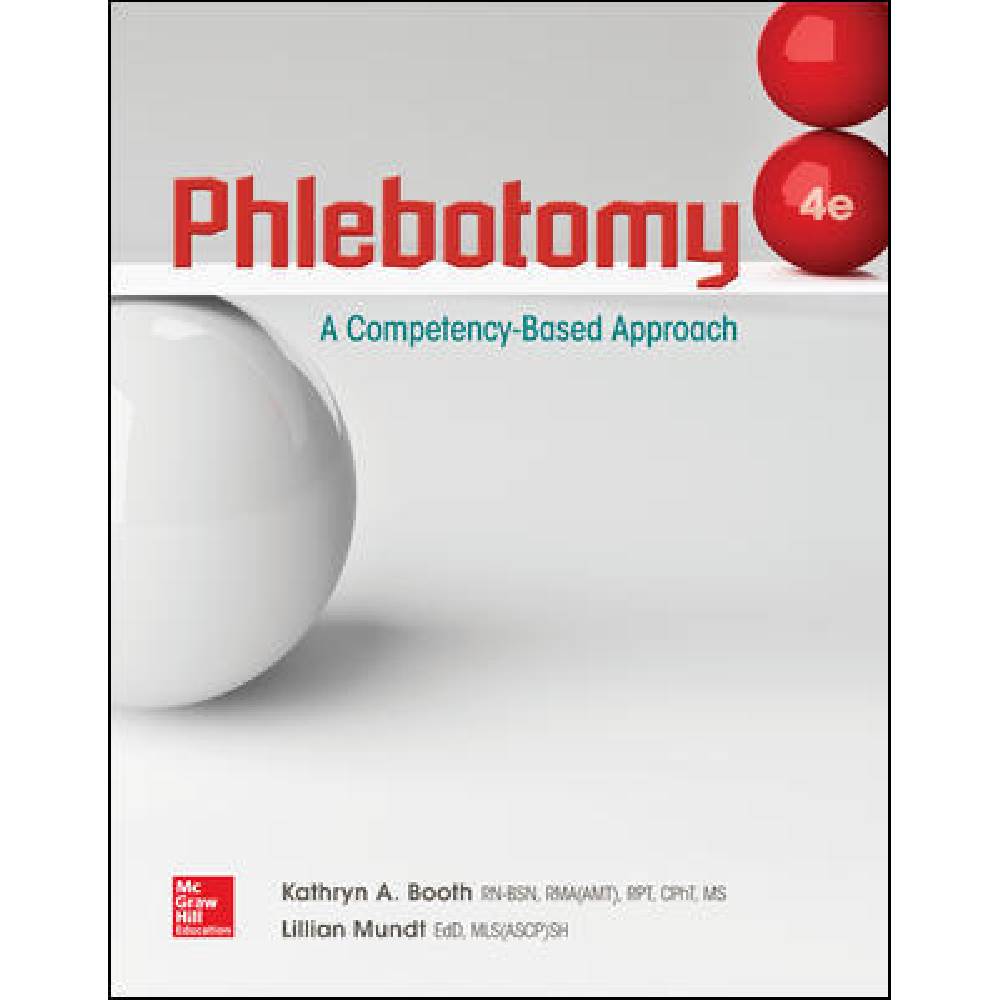Phlebotomy A Compentency Based Approach 4th Edition By Kathryn Booth – Test Bank
$55.00
Phlebotomy A Compentency Based Approach 4th Edition By Kathryn Booth – Test Bank
You will receive this product within 24 hours after placing the order
Phlebotomy A Compentency Based Approach 4th Edition By Kathryn Booth – Test Bank
Multiple Choice Questions
- Which of the following tests requires an arterial specimen?
A. Ammonia
B. Blood culture
C. Blood gases
D. Microhematocrit
A test for blood gases requires an arterial specimen.
- When collecting a specimen for blood culture, some blood is placed into an anaerobic bottle and will be exposed to a(n):
A. oxygen-rich environment.
B. room air environment.
C. oxygen-free environment.
D. gas-free environment.
The anaerobic bottle is free of oxygen.
- When collecting a specimen for blood culture, some blood is placed into an aerobic bottle and will be exposed to a(n):
A. oxygen-rich environment.
B. room air environment.
C. oxygen-free environment.
D. gas-free environment.
The aerobic bottle contains oxygen.
- Sterile technique is required during blood collection for culture to:
A. create confidence in the patient because of the lengthy procedure.
B. ensure no normal flora is sampled.
C. promote growth of pathogens in the sample.
D. stimulate blood flow to the surface veins.
Sterile technique is required during blood collection for culture to prevent contamination by any microorganisms.
- The liquid in the blood culture bottles:
A. removes antibiotics.
B. promotes bacterial growth.
C. inhibits normal flora.
D. destroys pathogens.
The liquid in the blood culture bottles promotes bacterial growth.
- The ARD resin in some blood culture bottles:
A. removes antibiotics.
B. promotes bacterial growth.
C. inhibits normal flora.
D. destroys pathogens.
The ARD resin in some blood culture bottles removes antibiotics.
- How much blood is usually needed for each blood culture bottle for blood cultures on adults?
A. 1 to 2 mL
B. 3 to 5 mL
C. 5 to 8 mL
D. 8 to 10 mL
Depending upon the manufacturer, usually 8 to 10 milliliters (mL) per bottle or tube for an adult is sufficient, while lesser amounts are drawn on infants and children.
- Using blood cultures to differentiate among bacteria in the blood provides information for:
A. avoiding cross contamination.
B. selecting appropriate culture media.
C. prescribing the most effective antibiotics.
D. identifying other cultures that should be performed.
Blood cultures differentiate among bacteria and provide information for prescribing the most effective antibiotics.
- False positive blood culture results may occur due to:
A. circular cleaning of the puncture site.
B. allowing the cleaning agent to dry on the skin.
C. wiping the tube stopper with alcohol prior to collection.
D. re-palpating the puncture site after cleansing.
Re-palpating the puncture site after cleansing may contaminate it and cause false positive blood culture results. Insufficient blood collection will also cause false negative results.












Reviews
There are no reviews yet.